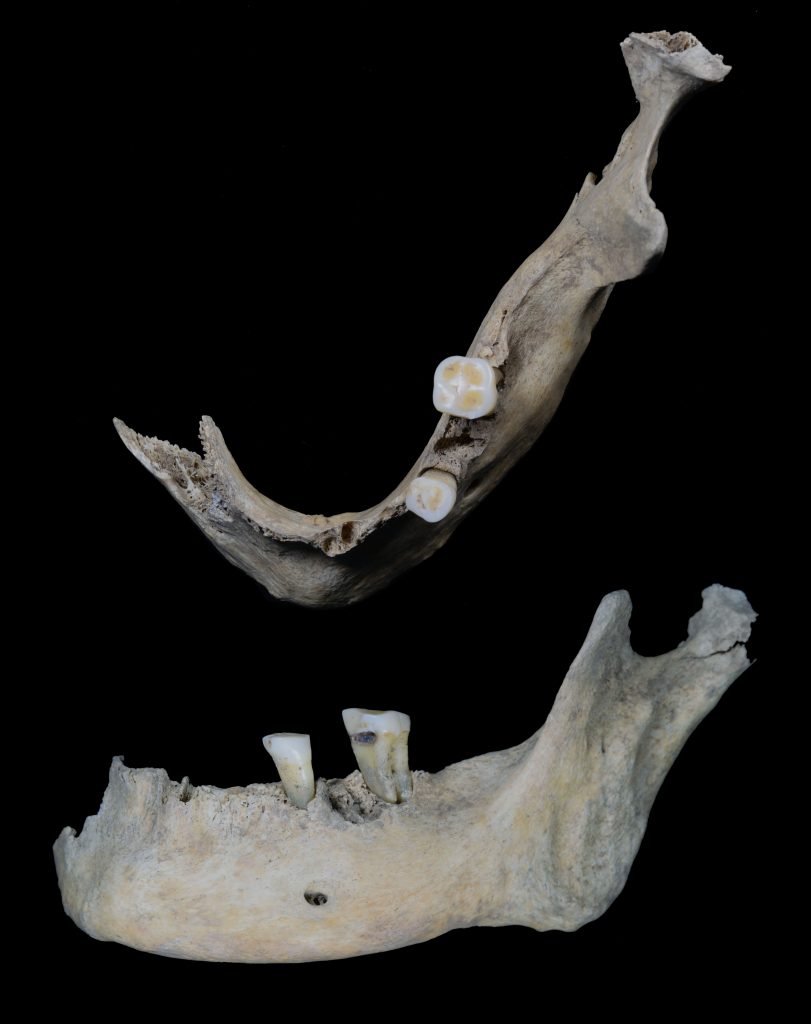Fish tea a staple of Iron Age Orcadian’s diet

A dish of fish was a favourite meal of an Iron Age Orcadian whose remains were discovered in South Ronaldsay.
This is the finding of analysis into the ancient woman’s jawbone, discovered during excavations at The Cairns.
According to researchers, this flies in the face of what we know about Iron Age Britain, where there is very little evidence for the use of marine resources.
The elderly woman’s jawbone was discovered in 2016, during UHI Archaeology Institute excavations. It had been placed against the wall of the broch in a vessel carved from a whale vertebra (something which researches think may mark the end of its life).
Initial research suggested the Iron Age Orcadian — nicknamed The Elder — was eating a diet of soft seafood during her old age. It was believed that this was, perhaps, out of necessity due to the poor condition of her few remaining gnashers. Further analysis, however, has suggested that The Elder may have been a lover of coastal cuisine throughout her lifetime.
Isotope analysis measures the ratios of different chemical isotopes in bones or teeth, which can then be used to investigate an individual’s diet and the environment they grew up in.
Previous isotopic analysis found that there was marine protein in the woman’s diet, but this related only to the end of her life. New studies, completed this week as part of a collaboration between the UHI Archaeology Institute and the University of York’s COMMIOS research project, have provided new details about the diet of the elderly Orcadian.
By analysing the dentine in her teeth, which is laid down incrementally in layers as each tooth grows and develops, the study has shown that she was consuming marine protein her entire life. A tooth from the woman was sampled multiple times — when she was estimated to be three, seven, nine, 11, 13, and 15 years old. The results show that in her infancy and teens she was indeed already consuming marine foodstuffs, and this was at a fairly consistent level throughout her life.
Researchers believe it is now apparent that the marine portion of her diet was not eaten out of convenience or necessity only in later life but was, in fact, routinely consumed throughout her life. The fact that seafood seems to have been avoided throughout the rest of Iron Age Britain opens up a new avenue of investigation for those in the field.
There are relatively few fishbones found in Iron Age middens and the analysis of human remains elsewhere suggests seafood was avoided, despite how ubiquitous the sea was for communities in Atlantic Scotland. This has led to suggestions that there may have been social restrictions, or taboos, on the consumption of seafood. The latest analysis allows the archaeologists to question whether “the Elder” had a special role or status within society at The Cairns in South Ronaldsay — one which might explain why her remains were singled-out for the special deposition that occurred towards the end of the broch’s life.
Alternatively, researchers have suggested that perhaps seafood was a more regular part of the Iron Age diet than previously thought.
It is “wonderful to be able to peer into the early, formative years of this older woman’s life” according to Martin Carruthers, site director of The Cairns excavations and a lecturer in archaeology at the UHI Archaeology Institute.
Mr Carruthers is pleased to have established “something of her her biographical details” and believes that the ongoing dietary and genetic studies “are beginning to give her some real personality.”
“It’s remarkable to be able to reach back and solve a problem like the question over her diet, which was previously unclear,” he added.
“Now we can see that the marine foodstuffs that she ate were after all a normal part of life for her, and this allows us to move on with further investigation of the mystery over the apparent lack of seafoods in Iron Age society at this time.”

